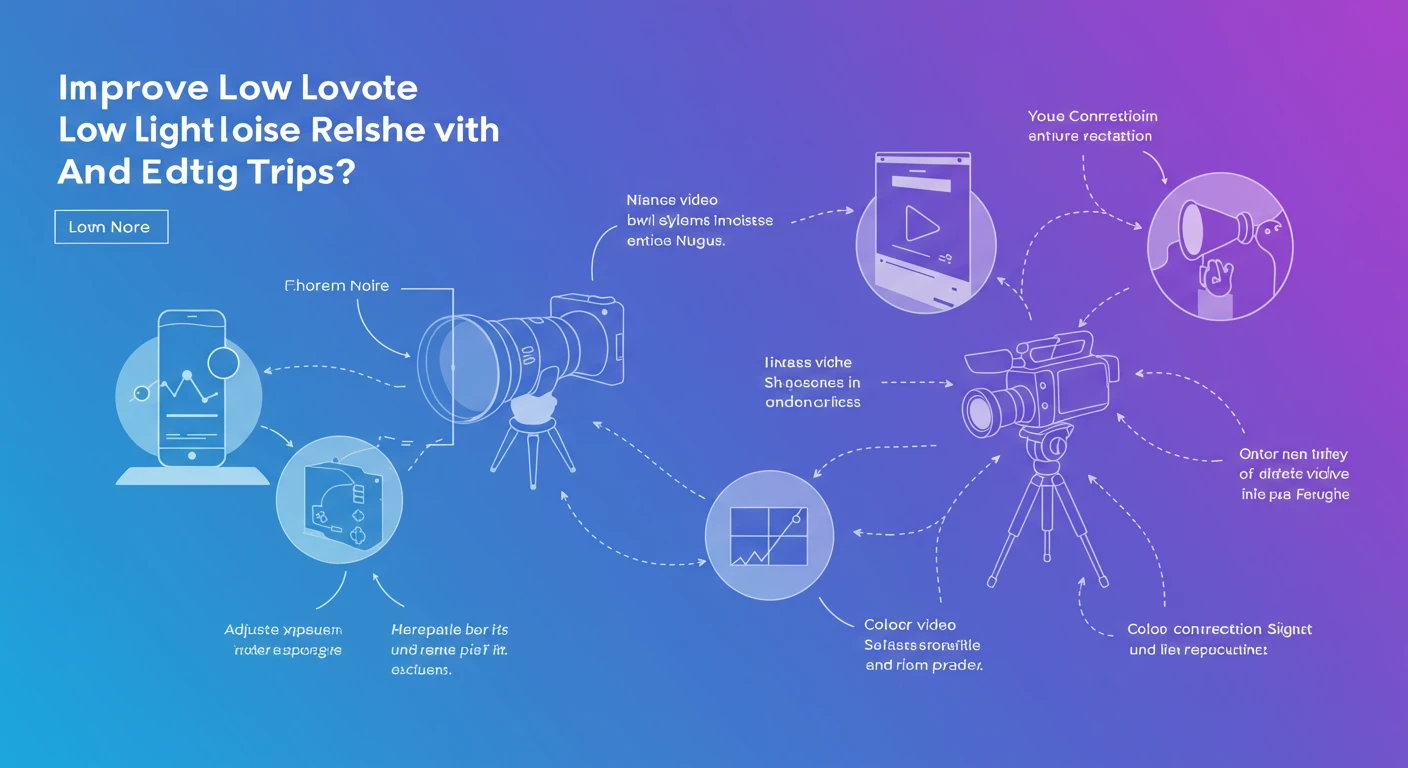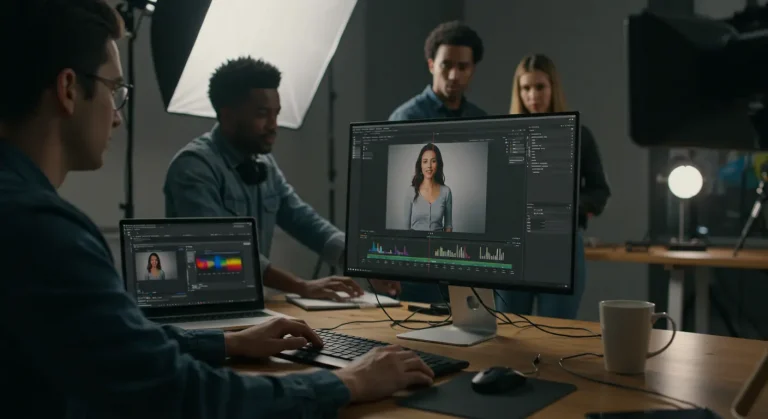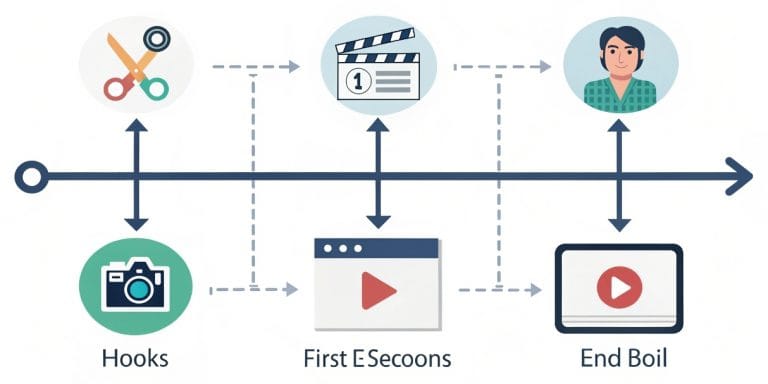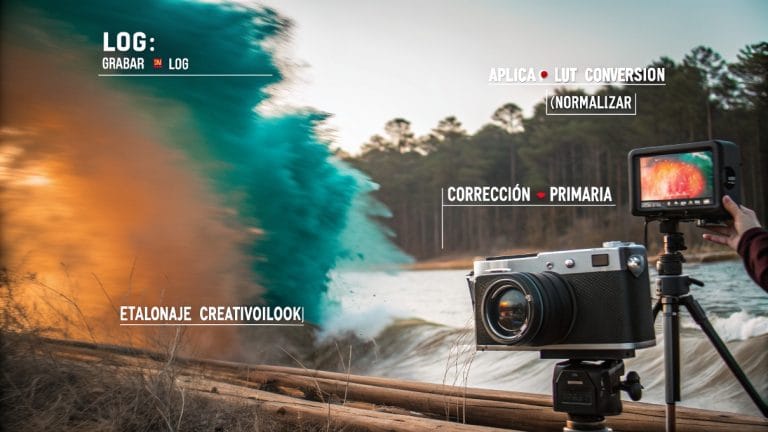How to Improve Low-Light Video (Noise Reduction Guide)
How to Fix a Low-Light Video
Professional techniques to salvage dark and noisy footage

✅ Quick Answer
Yes, you can significantly improve a low-light video by following this order: 1) Reduce noise first, 2) Adjust exposure with curves, 3) Correct color and saturation, 4) Apply subtle sharpening at the end. Key tools are Neat Video, DaVinci Resolve, or Topaz Video AI.
🌙 Is Your Video Dark and Noisy?
You’ve captured a special moment, but when reviewing the footage, you realize it looks dark, lacks detail, and is full of annoying digital “grain.” All is not lost!
Shooting in low light is one of the biggest challenges in video production, but post-production offers us powerful tools to salvage this material. At VideoEditHouse, we’ve saved thousands of videos that seemed beyond recovery.
💡 Key to success: The order of corrections is critical. Applying techniques in the wrong sequence can make the problem worse instead of fixing it.
🔍 Common Low-Light Issues
- Digital Noise: White/black “grain” and color blotches
- Lost Shadow Detail: Completely black areas
- Washed-Out Colors: Lost saturation and strange tones
- Lack of Contrast: “Flat” image without visual impact
- Lost Sharpness: “Soft” image without definition
❌ BEFORE
Dark, noisy, no details
✅ AFTER
Clear, clean, professional
Noise removed, details recovered⚙️ Step-by-Step Process (Critical Order)
🛡️ Noise Reduction (FIRST!)
Why first: If you increase brightness before reducing noise, you’ll amplify the problem exponentially.
⚠️ Common mistake: Never adjust exposure before cleaning up noise
How to do it:
- Apply noise reduction moderately (less is more)
- Prioritize chromatic (color) over luminance (brightness) noise
- Use multiple gentle passes instead of one aggressive one
💡 Exposure and Contrast Adjustment
Key technique: Use curves instead of brightness sliders to maintain natural contrast.
✅ Pro tip: Lift shadows but maintain black point to preserve contrast
Specific steps:
- Create point on luminance curve (shadow-midtone area)
- Gradually lift to recover information
- Watch histogram to avoid clipping highlights
- Adjust black point if it becomes grayish
🎨 Color Correction and Saturation
Focus: Noise and low light dramatically affect color.
💡 Internal order: White balance → Saturation → Selective adjustments
Detailed process:
- Correct color temperature first
- Carefully increase saturation (post-exposure)
- Use HSL for specific colors
- Pay special attention to skin tones
🔍 Selective Sharpening (Optional)
Dilemma: Can improve details but also amplify residual noise.
⚠️ Only if necessary: Sharpening can ruin all previous work
If you decide to apply it:
- Apply at the end of the process
- Use masks for specific areas (eyes, text)
- Prefer unsharp mask over basic sharpening
- Very moderate amount
🛠️ Best Tools (Evaluated by Results)
🏆 Neat Video
Best for: Extreme noise reduction
Advantage: Preserves 95% of original detail
Price: $399 (worth every penny)
Compatible: Premiere, Final Cut, Resolve, After Effects
🎨 DaVinci Resolve Studio
Best for: Complete correction workflow
Advantage: Hollywood color tools + noise reduction
Price: $295 (one-time payment)
Includes: Temporal and spatial noise reduction
🤖 Topaz Video AI
Best for: Extreme cases with AI
Advantage: Recovers “impossible” details
Price: $199
Note: Very slow but incredible results
📱 Adobe Premiere Pro
Best for: Integrated workflow
Limitation: Basic noise reduction included
Price: $22.99/month
Recommendation: Combine with Neat Video
🎬 Final Cut Pro
Best for: Mac users
Includes: Basic noise reduction
Price: $299 (one-time payment)
Limitation: Doesn’t differentiate noise types
💻 DaVinci Resolve (Free)
Best for: Getting started without investment
Limitation: No temporal noise reduction
Price: Free
Ideal for: Learning and practicing
📱 Quick Mobile Tips
🔧 Quick Phone Adjustment
Apps like LumaFusion (iOS) or PowerDirector (Android) have basic noise reduction. Not professional-grade, but can help in emergencies.
⚡ Prevention While Shooting
On your phone: use manual mode, max ISO 800, focus on stability. Better a stable and dark video than shaky and bright.
💡 Mobile Lighting Trick
Use another phone’s flashlight as fill light. Place it at 45° from subject, not direct. Can save you in critical situations.
🎨 Quick Correction Apps
VSCO or Lightroom Mobile have shadow/highlight tools. Not for professional video, but work for social media content.
🚫 When NOT to Try Salvaging the Video
⚠️ Unrecoverable material: These cases have very low success probability
- Extreme Noise: If noise exceeds 80% of the image
- Completely Lost Shadows: Histogram clipped at absolute black
- Severe Banding: Visible color bands instead of gradations
- Multiple Problems: Noise + motion blur + extreme compression
- Cost vs Value: If recovery costs more than reshooting
✅ Alternative: At VideoEditHouse, we offer free analysis. We’ll honestly tell you if it’s worth trying before you spend money.
❓ Frequently Asked Questions
Not exactly. The “Brightness” slider lifts the entire image uniformly, including blacks that become gray. “Exposure” or curves affect midtones more, maintaining deep blacks and natural contrast.
For professional results: Neat Video (the best), DaVinci Resolve Studio, or Topaz Video AI. For basic cases, native filters in Premiere Pro or Final Cut Pro may be sufficient.
Critical order: 1) Noise reduction FIRST, 2) Exposure adjustment with curves, 3) Color correction and saturation, 4) Subtle sharpening at the end (optional). Changing this order can worsen results.
It depends. LOG preserves more dynamic range for post-production, but requires more initial light. For extreme low light, sometimes standard profiles give better straight-out-of-camera results.
With professional techniques, 60-80% improvements are common. This includes significant noise reduction, recovery of 1-2 stops in shadows, and dramatic color improvement. The limit is the information originally captured by the sensor.
YouTube can worsen noise and create artifacts in dark areas. That’s why it’s crucial to reduce noise as much as possible before exporting. It also helps to export at slightly higher quality than needed.
🎬 Need Professional Help?
If you have valuable low-light footage you can’t salvage, VideoEditHouse can help. We’ve saved thousands of videos that seemed lost.
🎁 Free Analysis
Send us 30 seconds of your most problematic footage. We’ll tell you if it can be salvaged and how much it will cost. 100% free, no commitment.
✨ Conclusion
Improving a low-light video is possible with the right techniques and tools. The key is following the correct order: reduce noise first, adjust exposure with curves, correct color, and apply subtle sharpening only if necessary.
💡 Remember: It’s better to be conservative with adjustments and maintain a natural result than to over-process and get an artificial image. Less is more in video correction.
If the process seems complicated or the results aren’t what you expected, consider professional help. Sometimes the difference between amateur and professional results fully justifies the investment.








2 Comments